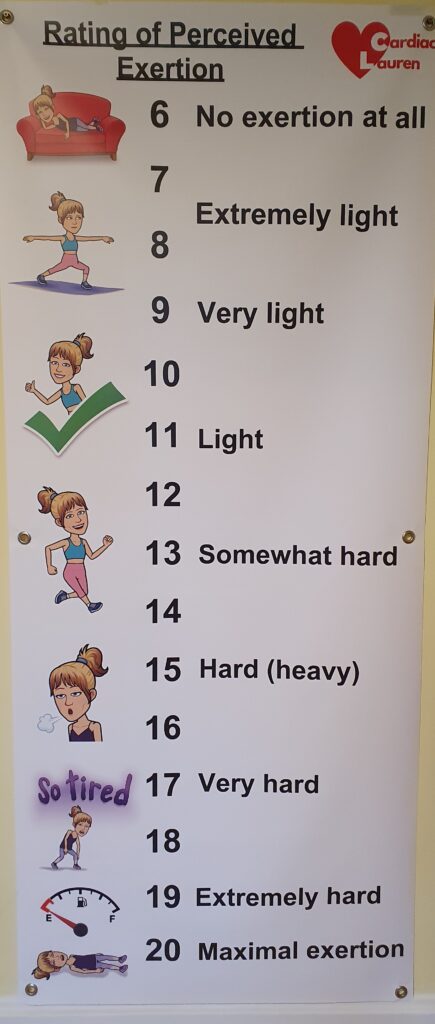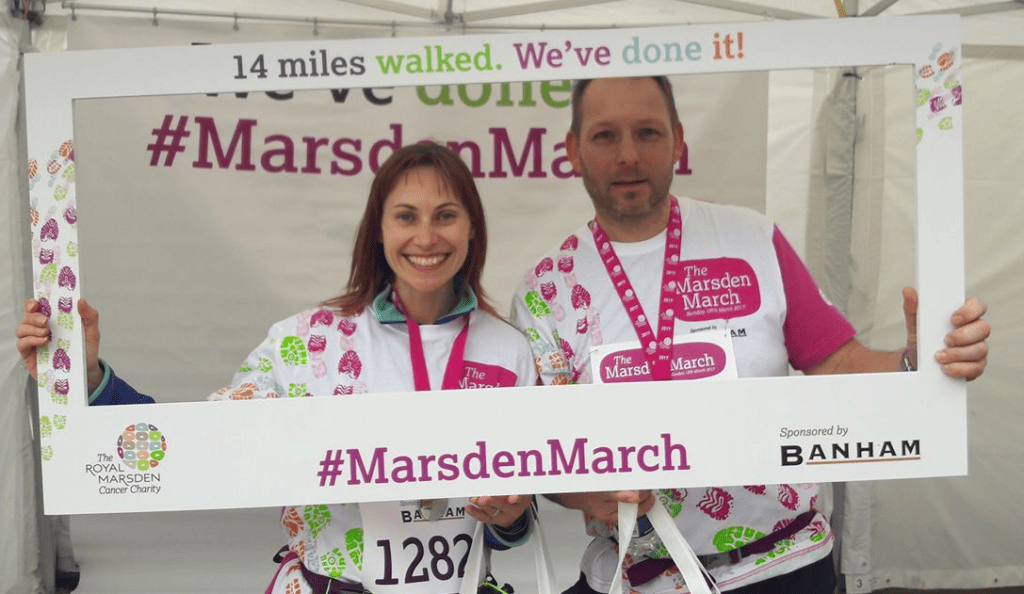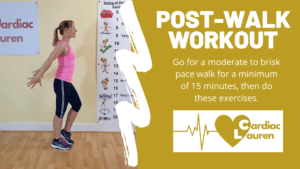Walk a mile – What does it mean to you? Are you on your own, walking a dog, in a social group or on a Charity walk?
Walking is one of the more popular ways people use for general activity due to its health benefits and it is a great way to maintain physical health and a healthy weight. We all need to stay active and improve our fitness level so working out how long it takes to walk one mile is a great start.
Some people like to have a walking goal, others like to walk the same distance and route, some join walking groups where women and men walk and chat so it is a more social occasion, whilst other regular walkers may do distances of a half marathon or more!

Table of Contents
How often should I walk?
For those who have experienced a cardiac event, the advice is to walk at a slow pace for a short period of time and gradually build up to a moderate walking pace once they are in Phase 2 Cardiac Rehabilitation and at least by the time they are starting Phase 3.
Everyone should stay active and aim for a 30-minute walk daily no matter what the pace, and to try and make it continuous, although some people may need to stop and rest. Over time as their endurance increases and physical health improves, their average walking speed will increase and they may be able to get to a brisk pace.
Some people will do formal exercise on 2-3 days in the week (for example, tennis, swimming, cycling, gym or Zumba) and so will not walk on those days, but will still need to go out and walk on the other days of the week.
How long does it take to walk 1 mile?
Typically it takes between 14 and 22 minutes for a healthy individual to walk one mile, but we all know we have different walking speeds, walking goals, fitness levels, and health issues so some people may go faster, whilst others are slower or even need breaks during the one mile.
The best way to monitor yourself when walking is the RPE Scale (Rating of Perceived Exertion). Walking is classified as a low-intensity exercise, or more often as an activity, as most people can walk without getting breathless for a period of time. Therefore on the Borg 6-20 RPE Scale, walking is around RPE 9-11 ‘very light’ to ‘fairly light’. The way in which it becomes ‘exercise’ is when it is at a faster pace and they become slightly breathless and it is around RPE 11-13 ‘fairly light’ to ‘somewhat hard’. You can watch a video explaining the RPE Scale here.

How many miles a day should I walk?
In the UK, adults should achieve 150+ minutes of moderate-intensity exercise each week and be as active as they can the rest of the time. As mentioned before, going for a walk is not necessarily exercise, but more like activity, so any walking is beneficial to your health. The longer distances you walk the better for your overall health.
When people get into the habit of regular walking they will start to walk further and walk faster and bring down their average walking speed and average time to get to the shops or walk a mile. They will feel fitter and will have improved their muscle tone and cardiovascular fitness so will find they start to move from the ‘activity’ stage into the ‘exercise’ zone and it can count towards their weekly exercise target.

Some people need a goal to work towards and this is where Charity walks are perfect. Local to Cardiac Lauren is the Marsden March which is either a 14-mile route between the two Royal Marsden Cancer Hospitals in Chelsea, London and Sutton, Surrey, or a shorter 5-mile route. Lauren actually completed it in 2017 as both her mother and sister had cancer treatment and operations for Breast Cancer. The data gathered from her walking app on the day shows she:
- completed 14.21 miles
- it took 3 hours and 40 minutes
- her average walking pace per mile was 15 mins 30 seconds
- she took 29,265 steps
- and burnt 901 calories!
Most people would not walk at this fast pace and will use a charity walk as a walking experience, but it goes to show you can go for a long walk at a good walking pace and get fit at the same time.
Therefore everyone will walk a different number of miles every day, but the average healthy person should aim for 2-4 miles.
How many miles is 10,000 steps?
This will depend on your stride length, so shorter strides will be fewer miles, whereas longer strides will be more miles. For the average stride of 2.1-2.5 feet, it is around 4 1/2 – 5 miles.
Cardiac Lauren likes to use a walking app when she decides to go out for a purposeful walk so she can compare her walking paces. On a good day, she will walk at a 14-minute mile pace which for some people will feel like they are race walking and in 1 hour of walking achieve almost 9000 steps – a distance of 4.4 miles. Whereas, on some days when she walks at a moderate pace, she can do the same number of steps, 9000, and only travel 3.7 miles at an average walking speed of 21 minutes a mile.
Is walking 30 minutes a day enough exercise?
This will depend on a couple of factors.
Firstly, do you do any other formal exercises in the week?
Cardiac Lauren members are encouraged to participate in the online exercise videos 2-3 times a week in order to improve their overall health and fitness levels, especially as they are designed to work the upper body too. This also means they are achieving around 90 minutes of their 150-minute moderate-intensity exercise target.
When you walk, you are only using your leg and buttock muscles, as well as your heart and lungs, but you rarely need to use your upper body, unless you are Nordic Walking. Therefore, walking should be incorporated into a weekly exercise regime of formal exercise and non-formal e.g. walking or housework, to achieve enough exercise.
One of the themed classes in Cardiac Lauren is Post-Walk Workout so you can mix the two activities on the same day!

Secondly, what is your average pace/intensity level when walking?
This matters as walking at a slower pace means that you are being active whereas if you are walking up hills, walking on uneven terrain rather than the same terrain as a pavement, you will be working harder and getting into your ‘exercise zone’. A brisk walking speed will take you into the ‘exercise’ zone too so that could count towards your 150+ minutes of exercise a week.



How many steps equal 1 mile?
For the average person, to walk a mile it will take between 2,000 and 2,500 steps.
Why don’t you go and find out how long it will take to walk a mile? Use a walking app on your phone or measure a mile on Google Maps, go out for a walk and time yourself.
Is walking 2 miles a day good for your heart?
There are many health benefits to walking on a regular basis and these include:
- reducing your risk of experiencing a cardiovascular event
- improving your mental health
- better balance
- improved cognitive function
- helping you achieve an upright posture
- reducing body weight and general weight loss
- increasing your metabolic rate thus improving the number of calories burned each day
- increasing fitness levels and aerobic capacity
- reducing high blood pressure
Remember the heart is a muscle and like every other muscle in the body it will get stronger and improve its function the more it gets used. Therefore, by increasing your walking speed and walking further, say two miles rather than just one mile, you will have made your heart beat harder and faster for a longer period of time and thus making it stronger and more efficient at its role in keeping you fit and healthy.
Is It Better To Walk Faster Or Longer?
It depends on what you would like to achieve long term. After having a heart event you are encouraged to start walking daily and achieve 30 minutes of continuous walking by at least 6 weeks. If you normally walk short distances, then increasing your pace and walking faster will be your main aim so you can get to places quicker.
I found myself taking longer to get to the newsagent in the morning to pick up my paper and I put it down to getting older. I had a heart attack and a stent put in and I now can walk to the shops 5 minutes quicker than before!
John
Some people like to increase their walking speed and challenge themselves each time they go out. Cardiac Lauren always likes to power walk and tries to walk a mile in under 15 minutes! This means she has an average walking speed of 4 miles per hour. Many of you will see this as a brisk walking pace which is not achievable but it is important to find your own walking pace and try and stick to it.
If walking is one of your hobbies and you prefer to walk long distances, then this is what you need to aim for. Start off with short walks, then start doing loops so you can stay close to home in case you need to stop sooner than you think. When you know you can go further add that as an option (you may want to go near a bus route so you know you can always get home easily). Try and go a bit further each week and you will find your leg muscles will get stronger with each walk, and your general fitness level will improve so you can go for miles and miles at a time.

Walking Tips
- Walk to the shop to get your morning paper or milk. If the shop is quite close then go to the next shop further up the road.
- When using the bus, get on the bus a stop later than normal and get off the bus a stop earlier.
- Try and keep walking continuously when taking your dog for a walk. If it is mainly stop/start then you cannot count this towards your ‘exercise’ target.
- Change where you walk each time you go out to keep it interesting. If you are limited, then try and alternate walks – turn left out of your house or turn right.
- Drive somewhere different and go for a walk.
- Walk up hills and steps! Try not to avoid them and remember to keep your feet moving when you get to the top so you don’t get lightheaded!
- Make your walk as continuous as you can.






